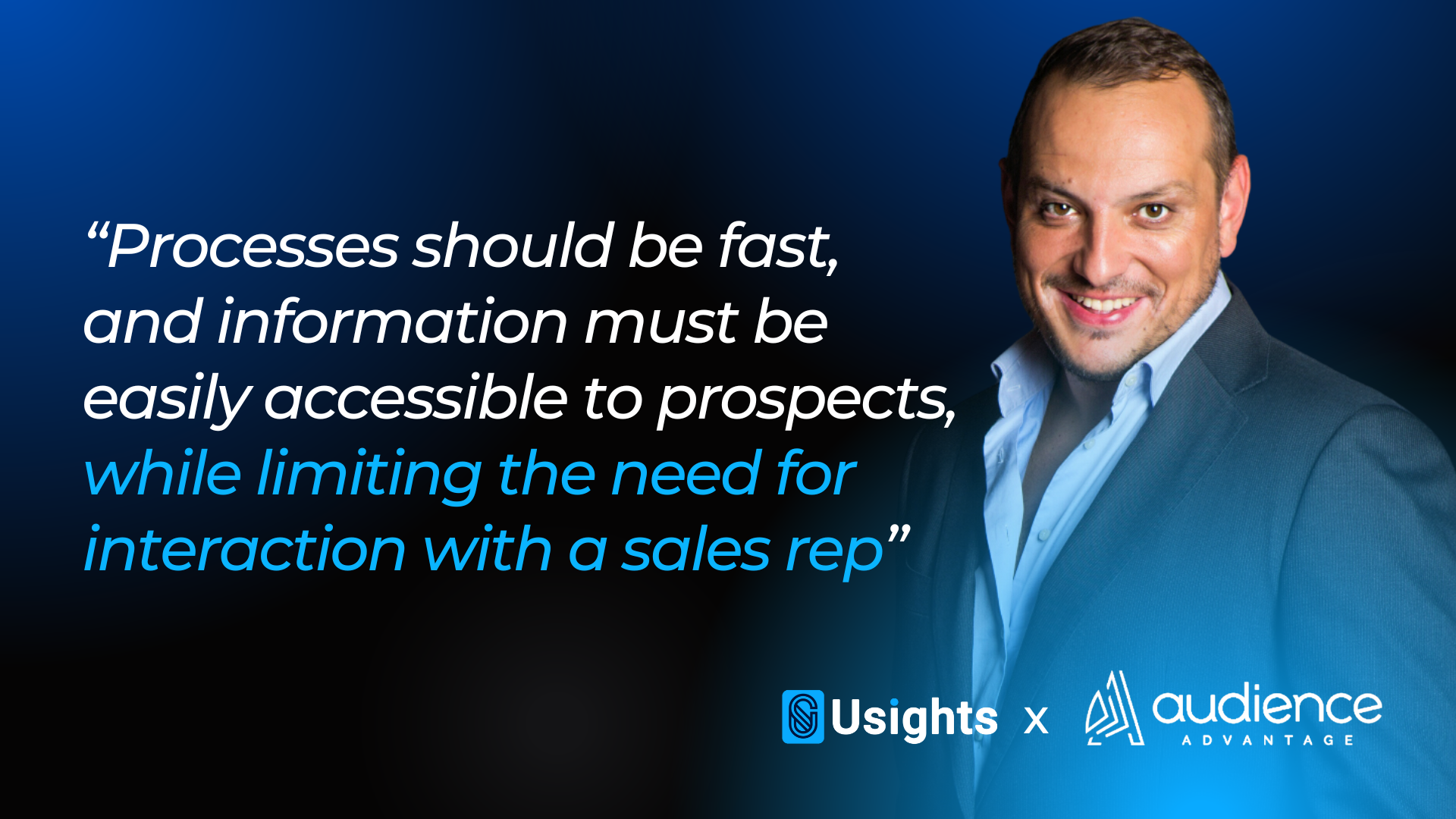Share:
How to approach Value Selling in 2023


Tom Lauwerys
Founder & CEO @ Audience Advantage
We all know this feeling when a prospect asks for pricing of our services or product too early. It’s like being put on the spot, forced to reveal our hand before we even get a chance to play it.
We’ve worked hard to build a quality product or service, and we know it’s worth its price tag – but how do we convince our prospects of that? The answer lies in value selling.
Value selling is a sales approach that focuses on demonstrating the unique value of your product or service, rather than simply listing its features and prices.
It’s about understanding the needs and challenges of your prospect, and showing them how your offering can solve their problems and create tangible benefits. It’s a powerful way to differentiate yourself from competitors, build trust with prospects, and ultimately close more deals.
But how do you put value selling into practice?
We had an interesting discussion with Tom Lauwerys, Founder & CEO of Audience Advantage, who helped us explore the key principles and components of value selling in 2023.
By the end of this article, you’ll have the tools you need to confidently navigate those early pricing conversations and build long-term, mutually beneficial relationships with your customers.
Some Developments
B2B selling is not as easy as it once was.
To start off, the digital age has brought about a tremendous shift in the way businesses operate, especially in the realm of sales.
B2C sales and lower deal-size B2B sales, which involve smaller transactions, have become lightning fast. Customers can now browse through vast catalogues of products, compare prices and features, and make purchases in a matter of minutes.
However, the same cannot be said for medium to large B2B deals. These deals involve higher-value transactions and more complex sales cycles that require a lot of negotiation, customization, and consultation. Despite these complexities, prospects still expect a seamless and efficient experience.
“Processes should be fast, and information must be easily accessible to prospects, while limiting the need for interaction with a sales rep,” remarks Tom Lauwerys. “However, these constraints can make it challenging to present a comprehensive and personalised value proposition that is tailored to the needs of the prospect.”

Moreover, outside communication can also influence perception by the prospects. Bad press, negative reviews, or rumours can damage the trust and reputation of a business, making it harder to acquire new customers.
“Even if these claims are unfounded, it can be challenging to break the bias or idea that customers already have in their heads. We are sensitive to media information”, Tom points out. “They don’t even have to talk about your company, just mentioning your product category can already create extra selling difficulties”.
Sometimes it doesn’t even have to come from the media. Think of social media or reviews sites. The distribution of misinformation has never been easier.
Finally, when selling on the value it is highly important to capture any signals and information on what is relevant and crucial to the prospect. Since the pandemic, sales teams have turned to remote selling, making sales calls much more challenging.
“The ability to read body language and other non-verbal cues have been taken away from the sales rep. Besides, let’s face it, virtual calls lack the depth and nuance of face-to-face communication.”
Tom continues: “I am not against remote selling at all when it comes to selling. But it sure has changed the approach around B2B selling, and it requires a different approach to winning deals”
This being said, let’s not be afraid of these developments. Instead, let’s use them to our advantage.
How to ace value selling
The goal of this article is not to give a complete how-to guide on value selling. Rather, some points to keep in mind. However, for the sake of illustration, we are working with a step-by-step example:
Step #1 – Active listening
Sales Rep: “So, can you tell me a bit about your current situation and what specific challenges you’re facing when it comes to problem/solution? I want to make sure I fully understand your needs before we move forward.”
Start by actively listening to the concerns and needs of the buyer. This will help you understand where they stand and how you can tailor your offer to their specific needs.
Step #2 – Present Value Proposition
Sales Rep: “Based on what you’ve shared with me, I think our product/service could really help solve those challenges. Let me explain a bit more about how we differentiate ourselves in the market and the unique benefits we offer.”
It is understandable that you tailor your sales storyline according to the context and obstacles faced by your potential customer. However, when it comes to presenting your value proposition, we believe in your current approach. Our aim is to draw your focus to the following steps.
Step #3 – Objection Handling
Prospect: “That all sounds great, but we’re really concerned about the cost. Can you give us a price breakdown?”
Sales Rep: “I completely understand that cost is a major factor for you. Before we dive into pricing, can I ask a few more questions to make sure we’re on the same page about your needs? That way, I can ensure that the offer I present to you is tailored to your specific requirements.”
When faced with the common request for price comparisons, politely ask for additional time to discuss the value of your offer before discussing the price.
“Prospects are considering different options. Often comparing the different vendors via a Vendor Comparison Matrix”, explains Tom. “Even if they are not using such a tool, unconsciously, that’s still what they are doing.”
“If this question comes up early in the meeting, it’s critical — and that’s the real challenge — not to give in and ask them to bear with you.”
Take advantage of the additional time to demonstrate the value of your offer and explain the benefits that come with a higher price point. This will help you break any pre-assumed claims and positively differentiate your offer from those of your competitors.
“The goal is to be perceived as one-of-a-kind”, Tom emphasises.
Step #4 – Collaborative Offer Making
Sales Rep: “Thank you for bearing with me. Let’s dive into price and how we can co-create a value that works for you. Our prices are a construction of these 5 variables – shall we answer these questions together?”
Tom’s approach, which he refers to as “Collaborative Offer Making“, requires the prospect to be involved in visually co-creating the final offer by asking them key questions.
By asking the prospect for their input in creating the offer, it creates a sense of willingness to contribute, since they do not want a generic solution and are curious about the exact price for their context. Moreover, they can witness the real-time impact of their wishlist on price.
“This approach not only helps to dispel the perception of being too expensive but also creates a feeling of ownership by the prospect”, Tom says, “and if the prospect desires the expensive elements, then the cost is much more acceptable.”
Additionally, by involving the prospect in the process, you bring emphasis on the problems and challenges they mentioned in the earlier stages of the sales process.
Not to forget, it creates more transparency: “It is also clear for the prospect where margins are being made, and this transparency ultimately creates trust.”
Last but not least, by involving the prospect in the creation of the offer, they are better equipped and more willing to defend the deal internally because they understand the rationale behind the solution’s cost.
“In B2B sales internal heroes as your buyer counterpart are vital to make it across a long & sometimes hard process”, Tom insists.
How technology revolutionised Value Selling
Technology can greatly enhance the efficiency and effectiveness of a sales team when it comes to value selling.
For instance, thanks to tech one can create price simulations that are shareable and interactive, allowing prospects to play around with different scenarios and see the benefits of the proposed offer.
Furthermore, using tools that track document (or simulation) openings can help sales reps follow up at the right time and avoid missed opportunities.
“Suppose your tool informs you that the prospect is spending a lot of time on the slide with your guarantees, then you know that your prospect finds it important to minimise the risk of their investment, and you can act accordingly”, shares Tom.
Value selling is also about making the prospect visualise and imagine the product or service at play. Augmented reality or even an automatic generator of custom proposals, can help buyers visualise being a user of your solution and better understand its benefits.
Another way technology can help sales teams is by automating manual or semi-manual processes, such as lead qualification, financial checks, proposal efforts, and contract signing processes. This allows sales reps to focus on what they do best – engaging with buyers and negotiating deals.
“An advice I often give to sales leaders is to split their selling process to the smallest chunks possible and then, for each sub-process, ask yourself: (1) should it be automated and (2) how easy would this be to automate”, recommends Tom.
Curious how you could leverage the power of tech for a higher focus on value selling? Get in touch with Tom Lauwerys here
Final thoughts
The central concept behind value selling is that businesses will purchase from the vendor that can offer the greatest value, not just the lowest price.
If, for example, your solution offers a 20% higher return compared to competitors, it shouldn’t matter that your prices are 10% more expensive.
This is not a simple task, but it is the ultimate goal of value selling.
Building trust and demonstrating your expertise is essential to uncovering your prospect’s true desires. The ability to do this effectively is what sets the great apart from the good.
We are aware that this article is not a complete guide on how to be great, but we sure hope that it has helped you re-evaluate how you present & defend your prices.
Do you still have some questions or doubts regarding this topic? Feel free to reach out to Tom.
